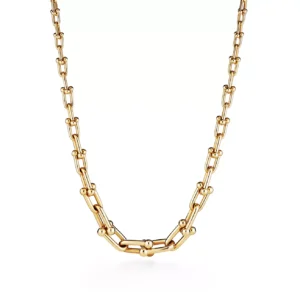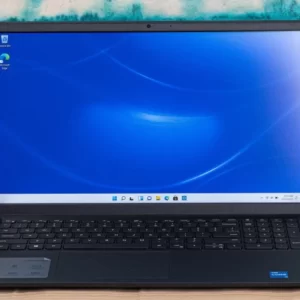
Review of the MacBook Pro 2016 with Touch Bar
Review of the MacBook Pro 2016 with Touch Bar

In evaluating Apple’s ultra-high-end laptop, we consider its design, build quality, features, technical specifications, and price. We pay special attention to the Touch Bar feature and all of its potential uses.
On October 27, Apple revealed the 2016 MacBook Pro upgrade at a special press conference. In addition to sixth-generation Intel Skylake CPUs, a sleek new design, and a clever configurable Touch Bar above the keyboard, the new MacBook Pro was introduced in 13- and 15-inch screen sizes. Additionally, it was rather expensive.
Our evaluation of the MacBook Pro 2016’s appearance, design, features, and price points.
The new MacBook Pro comes in three sizes: a 13-inch model without the new Touch Bar, a 13-inch and 15-inch model with it, and a 13-inch and 15-inch model with it. This review takes a comprehensive look at all three models, but we will make it clear when comments apply only to specific models.
The design is identical to last year’s, although on a smaller scale, but there are several physical modifications behind the cover. The most visible innovation, and the centerpiece of the unveiling event, is a touchscreen bar above the keyboard known as the Touch Bar, which we will cover in the next section.
Before we go any further, Apple has, as predicted, deleted the standard USB ports on the MacBook Pro, as well as the MagSafe charging port, and replaced them all with USB-C/Thunderbolt connections: four on Touch Bar versions and two on the 13-inch model without a Touch Bar. You also receive a 3.5mm headphone jack: phew!

Touch Bar
The Touch Bar is a long, slim touchscreen that sits at the top of the keyboard in place of the previous function buttons on the 2016 MacBook Pro. Depending on the program you’re using and any customization settings you’ve chosen, it can show and activate a variety of features and controls.
For example, in Safari, it displays tab thumbnails, forward and back buttons, and so on; in Mail, it displays QuickType typing suggestions and an emoji button. (Mail also makes more broad predictive suggestions, such as moving an email to a folder it feels is appropriate based on reading the message’s contents and/or sender.)
The Touch Bar supports multitouch, and there are some applications (in areas such as DJing) where you’ll be swiping and tapping with two fingertips at once. And we’ve found it admirably fast and responsive, switching near-instantly when changing apps or changing function within an app. Losing the function keys may occasionally be annoying – we must confess to still not having found a replacement shortcut for the handy old Cmd + F3 to temporarily clear the screen of all open windows – but its wide and customisable range of functionality should make for this
Touch ID
The little Touch ID sensor on the righthand edge of the Touch Bar has had the most impact on our day-to-day MacBooking so far. Not for Apple Pay, which we still rarely use even on iPhone – although this feature does allow you to make Apple Pay payments online, on your Mac, without the need for a linked iPhone – but for unlocking the device.
When you open the lid, the Touch Bar appears, with a pretty charming bouncing arrow pointing to the fingerprint sensor and the instruction ‘Unlock with Touch ID.’ Place your fingertip on the sensor for a fraction of a second and the MacBook will unlock: there is a slight delay (maybe two seconds), but you don’t need to remain on the scanner for more than the very beginning of this interval.
In terms of speed and reliability, we’re definitely in the realms of the second-generation Touch ID found on iPhone 6s and later, rather than the creakier first-generation Touch ID found on iPhone 6 and earlier.
(Keep in mind, though, that, like with the Touch ID function on iPhones and iPads, you will need to input your password at times, including as when signing out of your account.) And when you attempt to make changes in
Fingerprint authentication is really convenient. However, it gets much more easy when several user accounts are included. If you’re on the login screen and have multiple accounts logged in, pressing your finger to the scanner will automatically choose and unlock your account while ignoring the others, turning what would otherwise be a multi-step process into a single tap.
Furthermore, if you place your finger on the scanner and the account to which it is linked isn’t presently signed in and requires a password to unlock, the Touch ID scanner recognizes who is attempting to log in and navigates to the proper password entry area.

Speed testing & benchmarks
Using the GeekBench 4.0.3 benchmarking tool, we put the new MacBook Pro – the highest-specced 15-inch model with a 2.9GHz i7 CPU and 16GB of RAM – to the test. This MBP model achieved total speeds of 4,232 in single core and 13,211 in multi-core. By any metric, those are hot figures – but are they hot enough?
We looked at GeekBench 4 results for the closest counterpart from last year’s Pro generation, the 2.8GHz 15-inch machine with 16GB of RAM, for an approximate comparison.
This test generated scores of 4060 and 12033 for the 2015 model, whereas this one scored 4415 and 14627, indicating that the older model actually outperformed this year’s upstart. (The GeekBench results are publicly available.) Click here to browse scores from last year’s 15-inch Pros.) Overall, public scores indicate a slight speed increase this year.
For a more scientific examination, we turn to the systematic tests conducted by our colleagues at Macworld US, who ran three models of the early and mid-2015 MacBook Pros, as well as three 2016 models, through GeekBench 4.0.1. They discovered an undeniable upward trend, but it was small for general processing: between 1 and 5% in single-core tests, though multi-core scores were a little less predictable.

15-inch MacBook Pro model (with Touch Bar)
- 2.6GHz quad-core Intel Core i7, Turbo Boost up to 3.5GHz, with 6MB shared L3 cache, or 2.7GHz quad-core Intel Core i7, Turbo Boost up to 3.6GHz, with 8MB shared L3 cache (Configurable to 2.9GHz quad-core Intel Core i7, Turbo Boost up to 3.8GHz, with 8MB shared L3 cache)
- 16GB of 2133MHz LPDDR3 onboard RAM
- Radeon Pro 450 with 2GB of GDDR5 memory and automatic graphics switching, or Radeon Pro 455 with 2GB of GDDR5 memory and automatic graphics switching (Configurable to Radeon Pro 460 with 4GB of GDDR5 memory and automatic graphics switching); Intel HD Graphics 530
- 256GB PCIe-based onboard SSD, or 512GB PCIe-based onboard SSD (Configurable to 1TB or 2TB SSD)
- 15.4-inch (diagonal) LED-backlit display with IPS technology; 2880 x 1800 native resolution at 220 pixels per inch; 500 nits brightness; Wide colour (P3)
- Built-in 76.0-watt-hour lithium-polymer battery; estimated battery life up to 10 hours wireless web use
- 802.11ac WiFi; IEEE 802.11a/b/g/n compatible; Bluetooth 4.2
- Full-size backlit keyboard with 64 (US) or 65 (ISO) keys including 4 arrow keys; Touch Bar with integrated Touch ID sensor; Force Touch trackpad
- 4 x Thunderbolt 3/USB-C ports; 3.5mm headphone port
- 720p FaceTime HD camera
- 34.93cm x 24.07cm x 1.55cm; 1.83kg
UK price
The 2016 MacBook Pro models are no longer available direct from Apple (brand-new, at any rate: there are some on the refurbished store at time of writing) because they’ve been replaced by the 2017 Kaby Lake models. But for the sake of comparisons, here’s what the 2016 models cost at launch:
- 13-inch model (with Touch Bar): Starts at £1,749 (256GB) or £1,949 (512GB)
- 15-inch model (with Touch Bar): Starts at £2,349 (2.6GHz, 256GB) or £2,699 (2.7GHz, 512GB)




